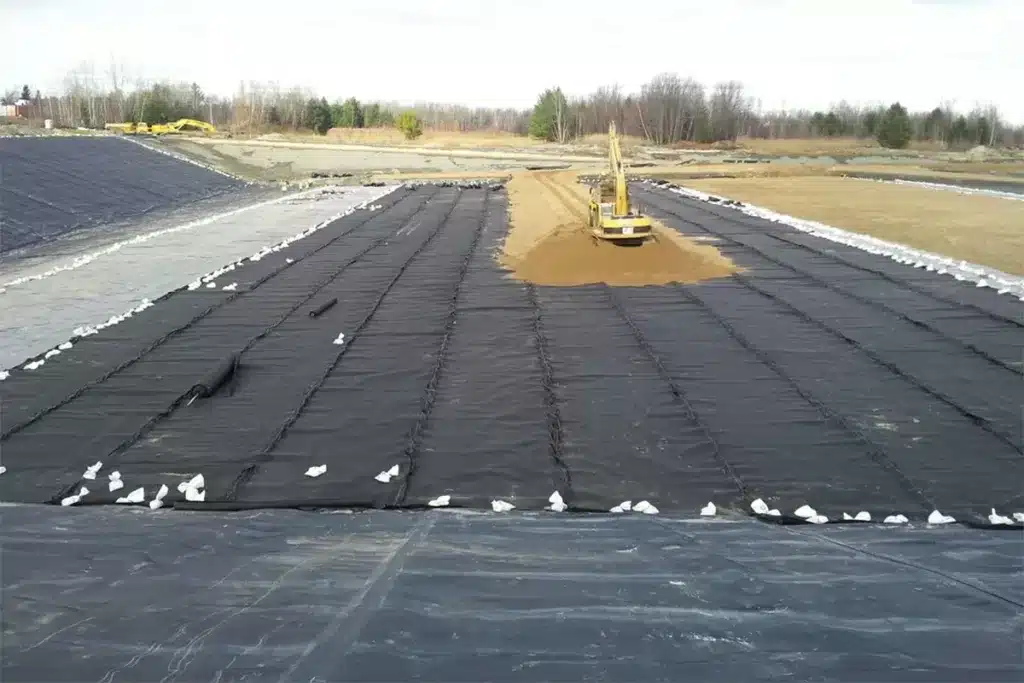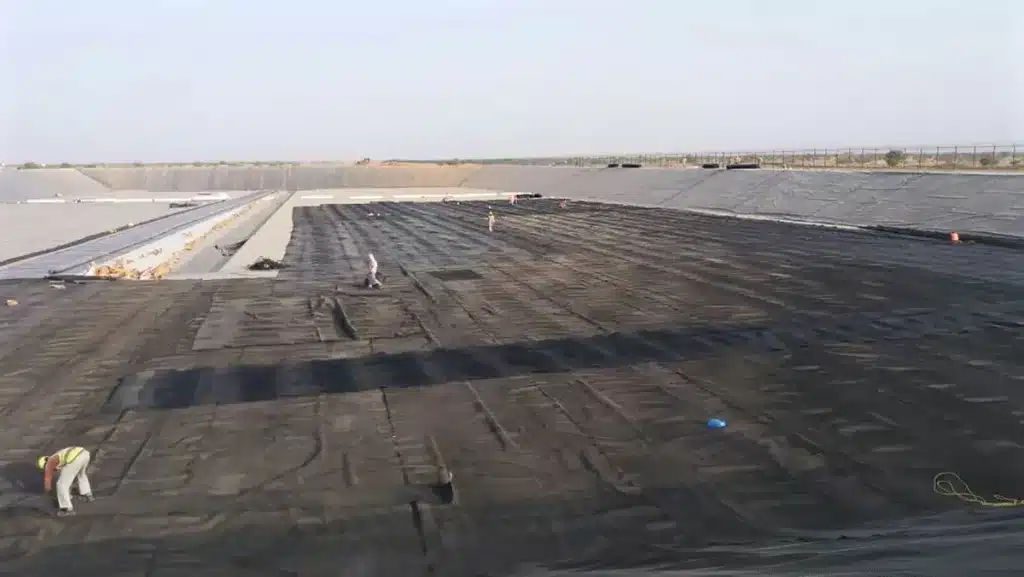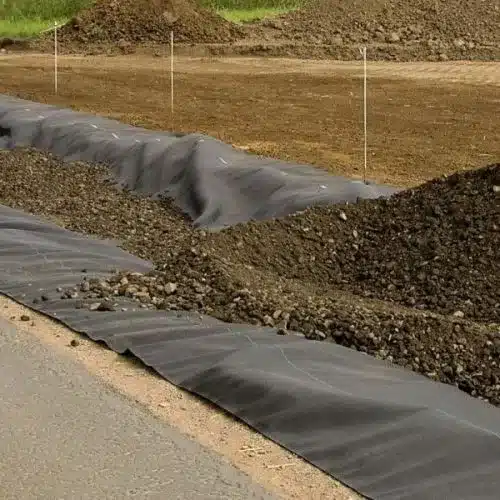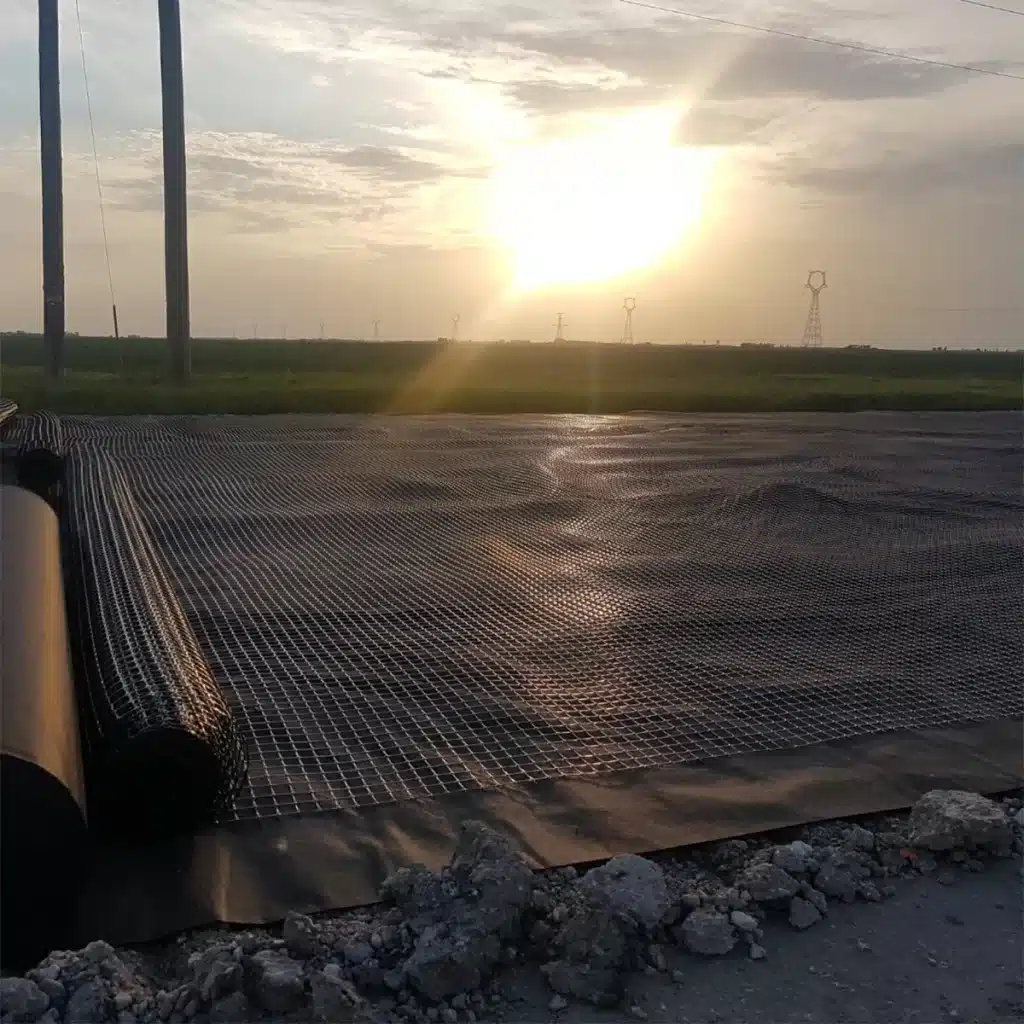+86-159 9860 6917
info@geofantex.com
geofantex@gmail.com
+86-400-8266163-44899
In the world of modern road construction, geocomposites have emerged as invaluable assets for enhancing the longevity and performance of paved roads. Geocomposites, a combination of geotextiles and other geosynthetic materials, offer a versatile solution for addressing various challenges in road construction. From improving subgrade stability to enhancing drainage and preventing the intrusion of fine particles, geocomposites play a pivotal role. These innovative solutions not only extend the service life of paved roads but also contribute to reduced maintenance costs and enhanced overall road quality. Explore the transformative potential of geocomposites to elevate the durability and functionality of paved road infrastructure.

What is the use of geogrid in pavement?
Geogrid is a material commonly used in pavement construction to improve the performance and durability of roadways and other paved surfaces. Its primary use in pavement includes:
- Soil Stabilization: Geogrids stabilize the soil subgrade, which is the natural soil beneath the pavement. By placing geogrid layers within the soil, they help to distribute loads more evenly, reduce soil movement, and prevent the subgrade from settling or deforming under the weight of traffic. This improved stability enhances the pavement’s overall longevity and performance.
- Load Distribution: Geogrids can spread the load from traffic more effectively across the pavement structure. This helps to minimize localized stress and prevent rutting or deformation of the surface. As a result, pavements can handle heavier loads and experience less wear and tear.
- Pavement Reinforcement: In certain situations, geogrids can be used to reinforce the pavement layers themselves. When incorporated between asphalt or concrete layers, they enhance the structural integrity of the pavement. This is especially useful in situations with weak or unstable subgrades, such as in rural or industrial areas.
- Crack Prevention: Geogrids can reduce the occurrence of reflective cracking. Reflective cracking is when cracks in the existing pavement or subgrade propagate through new asphalt or concrete overlays. By acting as a barrier, geogrids help mitigate this issue, extending the life of the pavement.
- Reducing Maintenance: The use of geogrids in pavements can lead to reduced maintenance costs and the need for fewer repairs. This results in less downtime and inconvenience for road users.
- Sustainable Construction: Geogrids can contribute to more sustainable construction practices by allowing the use of thinner pavement layers. This can lead to resource savings and reduced environmental impact.
What is the use of geotextile inroads?
Geotextile serves a crucial role in road construction for a variety of applications:
- Separation: Geotextile is used to separate different soil layers, preventing the mixing of materials. It acts as a barrier between the road’s base course and the subgrade soil, ensuring that they remain distinct. This separation helps prevent contamination and maintains the integrity of the road’s foundation.
- Filtration and Drainage: Geotextile’s permeable nature allows for efficient filtration and drainage. It permits the passage of water while preventing soil particles from passing through. This dual action helps in efficient drainage, reducing the risk of water accumulation in the road structure and preserving its long-term structural integrity.
- Reinforcement: Geotextile provides reinforcement to the road structure, enhancing its load-bearing capacity and overall strength. It helps distribute loads more evenly, reducing stress on the roadbed and preventing rutting and settlement. This reinforcement is particularly valuable in areas with weak subgrades.
- Erosion Control: Geotextile is employed to control soil erosion, especially on embankments and slopes. It helps stabilize the roadbed by preventing soil movement due to rainfall and other environmental factors.

What is the use of geotextile and geogrid in road construction?
Geotextile and geogrid are often used in combination to maximize the benefits of both materials and to fill gaps between the roads to improve soil structure. Here’s how they work together in road construction:
- Enhanced Separation, Filtration, and Soil Structure Improvement: When used together, geotextile and geogrid offer improved separation and filtration capabilities, while also serving to fill gaps between the roads and improve soil structure. Geotextile acts as a separator, preventing the mixing of soil layers, and geogrid reinforces the base course, enhancing its load-bearing capacity.
- Improved Drainage: Geotextile provides drainage channels, allowing water to flow freely while keeping soil particles in place. This combination helps in efficient moisture management and further contributes to enhanced soil structure, reducing the risk of subsurface erosion.
- Longevity and Reduced Maintenance: Geocomposites, combining geotextile and geogrid, extend the lifespan of the road by providing stability, preventing reflective cracking, and ensuring proper drainage, all while improving the soil structure. This comprehensive approach reduces the need for costly and frequent maintenance, making it a cost-effective solution for road construction.
What is the difference between geotextile and geocomposite?
The primary difference between geotextile and geocomposite lies in their composition and function:
- Geotextile is a permeable fabric designed for separation, filtration, drainage, and erosion control. It acts as a protective barrier and helps with moisture management in road construction.
- A geocomposite consists of a combination of one or more geosynthetics, specifically a geogrid, a geotextile, a geomembrane, and/or a geonet, with another material. It combines the functions of both geotextile and geogrid, featuring a geotextile layer for filtration and separation and a geogrid layer for reinforcing the road structure. Geocomposites offer a comprehensive solution, enhancing pavement stability, load-bearing capacity, and longevity, making them a preferred choice for road construction projects aiming for sustainable and cost-effective results.



Get Free Sample
We’ll respond as soon as possible(within 12 hours)






















